Microsoft CEO Nadella: Higher Growth, Higher Margins For ‘Partners Who Bet On Us’
‘It’s up to 80 percent less expensive to run Windows Server VMs (virtual machines) on Azure and SQL Server VMs on Azure than it is with our main competitor,’ Microsoft CEO Satya Nadella says.

Microsoft CEO and Chairman Satya Nadella opened his company’s annual Inspire event with a pitch for partners to invest further in the tech giant’s portfolio of collaboration tools, cybersecurity products and low-code, no-code offerings as well as some shots at his closest competitors, with an apparent dig at Amazon Web Services.
Nadella used some of his keynote speech to thank the Redmond, Wash.-based vendor’s 400,000 partners on their work helping customers adopt new digital technology.
“We want to be the best partner for our partners, and we are investing in your success,” Nadella said Tuesday. “The numbers speak for themselves – partners who bet on us grow faster and generate higher margins. And for every dollar in revenue we generate, partners who build differentiated software solutions on the Microsoft Cloud generate $10 more.”
[RELATED: MICROSOFT INSPIRE 2022: THE BIGGEST ANNOUNCEMENTS]
What did Microsoft CEO Satya Nadella Say During Inspire 2022?
Without using AWS’ name, Nadella appeared to put his offerings ahead of the cloud giant in terms of cost.
“Across our offerings, we offer the best value at every stage of the cloud migration,” he said. “To just share two examples, it’s up to 80 percent less expensive to run Windows Server VMs (virtual machines) on Azure and SQL Server VMs on Azure than it is with our main competitor.”
CRN has reached out to Microsoft about whether the “main competitor” mentioned is AWS. But cloud industry watchers widely consider AWS and Microsoft the top companies in cloud, followed by Google Cloud.
Nadella also said that Microsoft code repository subsidiary GitHub “costs up to 30 percent less when compared to our major competitor,” that using the Microsoft 365 suite of products can save customers “more than 60 percent compared to a patchwork of competitive solutions” and that the Power Platform suite of business process automation and productivity applications saves customers “80 percent or more compared to major competitors.”
Business intelligence company Slintel puts GitHub’s market share at about 86 percent, according to data updated earlier this month. GitHub has many competitors including GitLab, Atlassian subsidiary Bitbucket and AWS CodeCommit.
M365 includes a variety of productivity applications such as Excel, OneDrive, Teams and SharePoint. Microsoft’s closest productivity apps competitor is Google Workspace. And plenty of companies offer low-code, no-code alternatives to Power Platform, including Salesforce, AWS and Google.
Users of Microsoft’s Dynamics 365 customer relationship management (CRM) product saves customers “up to 50 percent compared to our major competitors,” Nadella said. And users of Microsoft’s security products suite “save more than 60 percent when they turn to us as compared to a multi-vendor solution.”
Dynamics has many competitors in the CRM space, notably Salesforce, Oracle subsidiary NetSuite and SAP. And cybersecurity vendors such as CrowdStrike and Huntress have taken aim at Microsoft’s security stack, promising that their products cover any gaps.
Here’s more of what Nadella had to say.
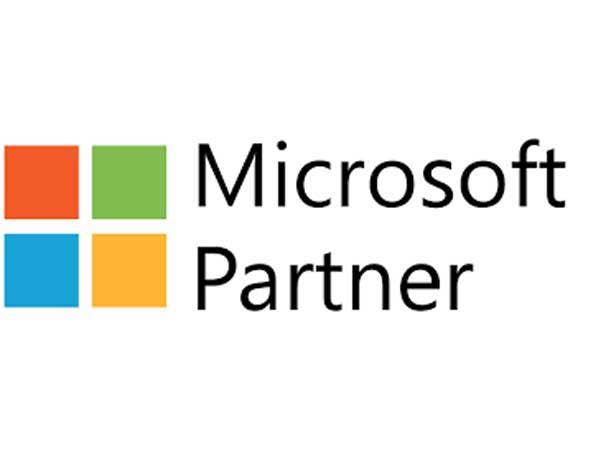
A Unique Partner Ecosystem
Everyday, 400,000 partner organizations around the world are applying technology to make a real difference one country, one community, one customer at a time.
You’re helping to make small businesses more productive, nonprofits more effective, multinationals more competitive, governments more efficient, improving healthcare and educational outcomes and creating economic opportunity and creating jobs.
That’s what makes this partner ecosystem so unique. Over the past few years, we’ve talked extensively about digital transformation. But today, we need to go beyond that – from talking about digital transformation to delivering on the digital imperative for every organization.
The time is now. It’s what will make the difference between organizations that thrive and those that get left behind. Every organization in every industry will continue to infuse digital technology into every business process and function so that they can do more with less.
The case for doing this has never been more urgent or more clear. In fact, I would say it’s existential. The next 10 years are not going to be like the last 10.
Digital technology is a deflationary force in an inflationary economy. It’s the only way to navigate the headwinds we are confronting today. This is not some abstract concept. There are many examples across every industry.
In fact, just two weeks ago, I met with a CEO of a CPG (consumer packaged goods) manufacturer, who explained how they were able to use our technology to increase throughput of operations in a Latin American plant and use the savings to avoid raising prices and address one of the greatest challenges facing the region – food insecurity. … A Coca-Cola bottler in Europe has used our technology to lower their energy consumption, the other crisis we are facing today.
Doing more with less doesn’t mean working harder or longer. That’s not the way we’re going to scale. But it does mean applying technology to amplify what you’re able to do across an organization so you can differentiate and build resilience.
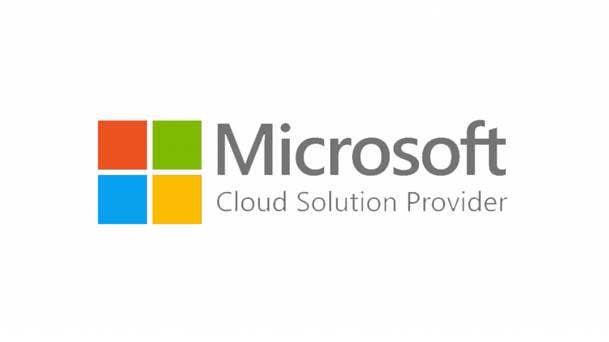
Beating Competitors On Cost
It all comes down to how we can help you use the Microsoft Cloud to help your customers overcome today’s challenges and emerge stronger. No other cloud offers our breadth or depth. No other cloud offers, not just best-in-class products, but best-in-suite solutions across the entire tech stack.
It starts at the infrastructure layer. Leaders in every industry are accelerating their migration to the cloud.
And it’s not just lift and shift – 95 percent of new digital workloads will be deployed on cloud-native platforms by 2025. IT (information technology) and OT (operational technology) are coming together, and the cloud is foundational to how organizations will be competitive going forward.
Every customer I speak with is clear eyed about aligning their IT investments to scale with demand, and moving to the cloud allows them to just do that, converting their spending from CapEx (capital expenditures) to OpEx (operational expenditures).
This creates an opportunity for all of you to help organizations by providing your expertise. It’s all about helping customers drive operational efficiency, deliver faster time to value and reduce costs.
You can measure success by how much compute you’re using and how efficiently you’re using it. I can’t say this enough – it’s all about doing more with less. Across our offerings, we offer the best value at every stage of the cloud migration.
To just share two examples, it’s up to 80 percent less expensive to run Windows Server VMs (virtual machines) on Azure and SQL Server VMs on Azure than it is with our main competitor.
It’s not just about costs. We offer unique capabilities to simplify VM management and SQL Server compatibility to ease your move and are significantly investing in migration and modernization programs to help customers move forward with confidence.
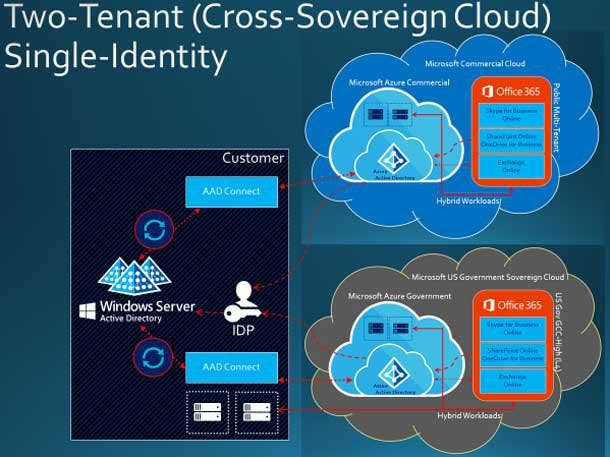
Global Expansion And Cloud For Sovereignty
We’re building the next-generation, multi-cloud, multi-edge infrastructure to support this. It starts with Azure as the world’s computer. We have more data center regions than any other cloud provider. And I’m excited to announce that over the next year, we will launch 10 new data center regions in 10 markets, spanning four continents, delivering faster access to services and helping address data residency needs.
Sustainability in all this is going to be key to our approach. We are adding new capabilities to address our data centers … reducing waste. In fact, we are committed to reusing over 90 percent of our cloud computing hardware by 2025.
Servers might find a second home in schools or job training programs, and the reclaimed memory cards might be used in electronic toys or game systems.
A critical aspect of our strategies is to work closely with local partners to meet the sovereignty needs of public sector customers and specific markets, including Arvato and SAP in Germany, Leonardo in Italy, Proximus in Belgium, Mirage and Capgemini in France and Telefonica in Spain, just to name a few.
Today, we are going even further to help partners around the world serve public sector customers. We are announcing the Microsoft Cloud for Sovereignty, which provides policies, controls and technologies that will enable customers to meet a government’s specific data sovereignty, security and privacy requirements.
It’s all built on what we have come to expect from the public cloud – improved resiliency, agility, cost and scale economics. This builds on our innovation with Azure confidential computing, which is already helping customers bring their most sensitive workloads to the cloud.
New Azure confidential computing capabilities – including the ability to encrypt data while it’s in use without changing your application – make it easier for you to work with customers in regulated industries.
With new confidential virtual machines as well as Azure confidential ledger, your customers can have more confidence that their data is being protected during its entire lifecycle. The combination of our core capabilities around confidential computing and sovereignty make our cloud very unique.
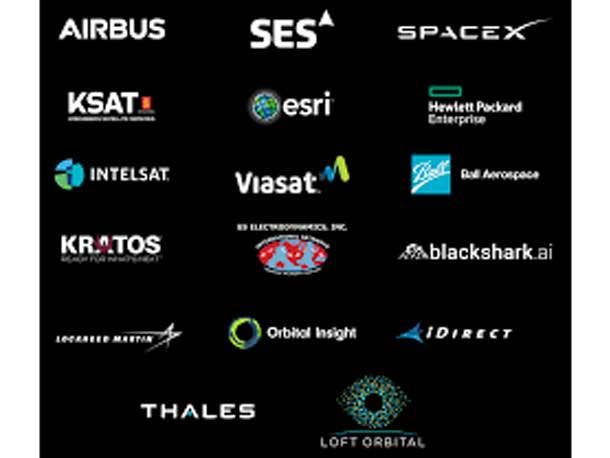
Azure Space Community
And our differentiation goes beyond that. With Azure Arc, you’re bringing the power of Azure anywhere so that you can build apps with Azure services that can run across on-premises, edge and multi-cloud environments.
With Azure for Operators, we’re bringing computing to the 5G edge. We have the largest partner ecosystem of anyone in the industry helping to deliver next generation private wireless solutions.
And together with our partners, we are extending our infrastructure beyond our planet with Azure Orbital, unlocking scenarios like Earth observations for precision farming, global communications for remote connectivity and the satellite fleet operations for sending commands to orbit in real time.
And today, we are announcing our new Azure Space Partner Community to help partners scale their space solutions on Azure.
(Satellite services provider) Intelsat, for example, is connecting its satellite network to our cloud, helping customers create private LTE and 5G networks in some of the most remote corners of the world.
NOAA (the U.S. National Oceanic and Atmospheric Administration) is working with our partner (space services provider) Xplore to extend the mission life of their satellites and reduce costs using Azure Orbital Ground Station as a Service. They’re using Azure Orbital with Xplore’s mission control software platform to transmit commands to NOAA’s polar-orbiting weather satellites.
This ubiquitous fabric – from 5G to space – will enable a new generation of modern connected applications that will create opportunities for our partners to transform entire industries. And more than 95 percent of the Fortune 500 trust Azure for their most mission critical workloads. Leaders in every industry use our cloud infrastructure today.
A great example of this is (consumer goods giant) Procter & Gamble, which last month chose our cloud to digitize more than 100 of its manufacturing sites around the world with the goal of increasing productivity and sustainability across its operations.
They’re using our technology to build a new IoT (internet of things) platform that will analyze data from production lines – including production runs, downtime, changeovers and more – to build the future of digital manufacturing, connecting the back office to the retail store and empowering employees to do more with less – more impact, less time, money and effort.

Tools For Pro And Citizen Developers
Now let’s talk about empowering pro and citizen developers and our approach to digital and app innovation.
Today, every company is a digital company. In fact, there’s more demand for developers in some key industries – like public sector, education, energy, retail, entertainment and transportation – than even the tech industry itself.
This represents a tremendous opportunity for all of you. Organizations are eager to equip fusion teams of pro and citizen developers with best-in-class tooling so that they can scale that impact together.
And they are eager to adopt DevOps (development and operations), which is fast becoming the default way to deploy code to production, creating a massive opportunity for all of you to help them adopt these new processes.
From Azure DevOps and GitHub to Visual Studio, we have the most complete platform and the most trusted cloud to help developers go from idea to code, code to cloud and cloud to the world.
GitHub is where innovation of tomorrow is being built openly, securely, instantly and automatically. Every step of the way – by being cloud first, end to end – GitHub brings an unparalleled developer experience and costs up to 30 percent less when compared to our major competitor.
With GitHub, you get the best of both worlds – affordability and scalability. Ninety percent of the Fortune 100 use GitHub today, both digital natives and the world’s most established enterprises, from AT&T to GE (General Electric), build software on the platform.
Take (carmaker) Mercedes-Benz as an example. Software development isn’t something they do on the side. It’s core to the company’s value add – 20,000 employees at the company, more than 10 percent of the total workforce, use GitHub as the central development platform to build, ship and maintain software.
And with our Azure PaaS (platform-as-a-service) services, organizations can build modern, more-resilient cloud-native applications.
Azure Container Apps is a fully managed, serverless container service for building and deploying modern apps at scale. (Clothing retailer) H&M has used container apps to modernize more than 750 applications, many of which were built as web apps with databases.
We are committed to Java and are helping organizations modernize their Java application portfolios with Azure Spring Apps Enterprise, which we built as part of our expansive partnership with VMware. FedEx, for example, is using the service to run all their Java apps at massive scale, predicting the estimated time of arrival for millions of shipments.
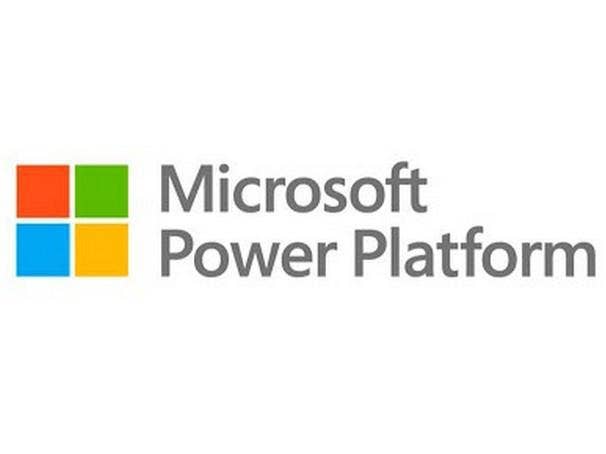
Plug For Power Platform
And we’re not stopping there. By 2025, 70 percent of new applications deployed for the enterprise will use low-code or no-code tools, up from less than 25 percent in 2020.
With Power Platform, we have the leading business process automation and productivity suite for domain experts in every industry, with 20 million monthly active users.
We’re taking a pretty unique approach to what is an expansive and high growth market bringing together robotic process automation; low-code, no-code tools; virtual agents; website building and business intelligence into a common platform for building end-to-end business solutions, reducing complexity as well as cost.
Customers can save 80 percent or more compared to major competitors. And we’re seeing ISVs (independent software vendors) integrate Power Platform into their own solutions.
Adobe, for example, is embedding Power Automate into Acrobat Sign so that users can automate the document workflows directly from within the app itself. They can generate documents at scale and easily route agreements across stakeholders and systems.
Quite frankly, in this time of constraints, not everyone can invest in large, complex systems. But with Power Platform, anybody can have an incredible impact in an organization. And when you combine Power Platform with our pro-developer tools like GitHub, it allows fusion teams to come together to do much more.
Both pro and citizen developers can contribute to the same repo (repository), and pro-developers can extend their apps with Power Platform, too.
And to be clear, it’s not just one app or one workflow or one automation. It’s all about accelerating digital-capability building across every function in the organization.’
In fact, the number of organizations building centers of excellence around Power Platform has grown exponentially over the past few years.
Leaders in every industry – including AB InBev, Arm, H&M, Lumen Technologies, PG&E, Robobank, Toyota, Vodafone, ZF Group, Zurich Insurance – have all built centers of excellence in partnership with many of you to train employees at scale in how to use Power Platform.
PG&E, for example, partnered with Cognizant to launch and scale use across nine business units with the goal of eliminating redundant and manual processes from employee workflows.
It saved an estimated 75,000 work hours with another 645,000 hours in savings to come.

On Data Solutions
Now let’s talk about data and AI. It’s all about two things – getting your data estate in order and applying large AI (artificial intelligence) models as platforms. That’s the dual challenge.
This is the age of AI. The core business logic is no longer just being written by developers. It’s being written by software. In fact, by 2025, 10 percent of all data will be produced by generative AI models.
Analytics is moving from back-end processes to being a critical part of the product experience. And so, how are you using this intelligence? How are you helping your customers translate it into more predictions, more insights, more actions, more automation?
It’s hard to overstate the opportunity. What we are seeing is the convergence of previously disparate categories. We’re the only company that has a complete data fabric – from the operational stores to the analytics engine to data governance with our Microsoft Intelligent Data Platform. Let me be super clear, this is not just about best of breed – it’s about bringing the best of suite.
This allows organizations to spend more time creating value and less time integrating and managing their data estate. Just think about the time and effort that goes into aligning your operational stores and analytics with new regulations. Or just imagine the total cost of ownership if you try to do all this integration on your own. Analytics alone on our intelligent data platform is about 4.8x faster and costs up to 59 percent less than other cloud analytics vendors.
Today, 70 percent of the Fortune 1000 use two or more of our data solutions. And we see leaders from every industry, from AT&T and (Big Four accounting firm and consulting giant) KPMG to (insurance services provider) Manulife unify their data and reduce costs using our tools. Walgreens was able to achieve 3x the performance at one-third the cost when it migrated to our data platform for their analytic needs.
When it comes to AI, we’re seeing a real paradigm shift as the world’s large AI models become powerful platforms themselves. In Azure, we built the most powerful AI supercomputer in the cloud, and we’ve used it to train these large, state-of-the-art AI models.
But it’s not enough to talk about these models. It’s about applying them. We are building models as platforms in Azure so that you can apply these advances to any use case, including some of the biggest challenges we face as a society today.
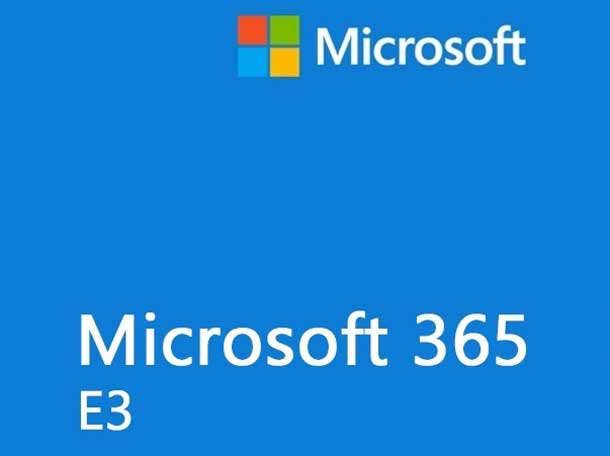
Hybrid Work ‘Here To Stay’
Now let’s turn to the next digital imperative and our approach to modern work and business applications.
Hybrid work is here to stay – 73 percent of the employees would like the flexibility they’ve experienced during the pandemic to continue.
And at the same time, 67 percent say they want more in-person time with colleagues. It’s clear that flexibility and well-being are non-negotiable as new patterns emerge.
We all need to consider two things. First, the change in where and how people work and how this impacts every business process across the organization. And second, how automation is supercharging collaboration.
Technology can help us navigate this change. Every organization requires a digital fabric that connects people, places and processes. And this creates a massive opportunity for all of you to help make hybrid work work.
We are the only cloud that supports everything an organization needs to make this shift. Think about all the hybrid work solutions your organizations require today – meetings, chat, phone scheduling, project management, cloud storage, analytics and automation. And the cost and the complexity that goes along with adding, deploying, managing each of them.
Microsoft 365 brings all these solutions together into one integrated experience that makes work easier and smarter for employees. And customers can save more than 60 percent compared to a patchwork of competitive solutions.
When it comes to people, it starts with taking a new approach to collaboration both inside and outside the organization. We need to be great at sync(hronous), async(hronous), in-person and remote collaboration.
In a previous era, you could get away with one or two of these quadrants. But now, you need all four quadrants to be excellent at any given time for work to get done and collaboration to happen.
Across Microsoft 365 and Teams, we are innovating to support all the ways people work. And today, we’re announcing many, many exciting new features to make this possible, including collaborative annotations so that you can engage on any content presented with screen share in Teams meetings; video clip, so you can capture and edit a short personalized video message; and Excel Live, which allows meeting participants do edit Excel files directly from a meeting window itself without needing to leave Teams.
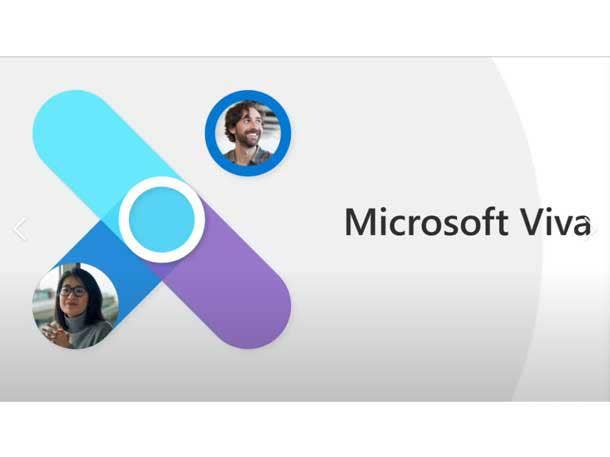
Updates To Viva
We also need to prioritize the employee experience. When work is increasingly happening anywhere anytime, the employee experience needs to adapt accordingly. It needs to be digital first, connecting every employee wherever they are and whenever they are working to facilitate engagement and retention. That’s our goal with Microsoft Viva, which is now being used by more than 1,000 organizations as their digital employee experience platform, helping employees feel more connected to the company’s mission and culture.
Viva brings together communications, communities, knowledge, learning, goals and insights – right in the flow of work in Teams.
I’m so excited in particular about Viva Goals, which creates a different form of alignment across a team or organization. It brings business goals into the flow of everyday work. Think about how powerful that is. When all of your objectives and key results are shared across the organization, everyone becomes aligned. Viva Goals will be generally available next month.
In the new world of work, it’s more important than ever to connect people across the organization, wherever and whenever they work, so everyone feels included and invested.
It’s why we’re introducing Viva Engage, which helps employees build community, spark engagement with leadership, harness the knowledge and answers and build their own personal networks.
It includes new experiences like ‘storyline’ so you can create and share what you are passionate about, discover and follow colleagues and leaders and find answers to questions.
We’re also expanding Viva to include new modules for specific functions, starting with sales.
We have connected Dynamics 365 with Office and Teams to harness customer and business data and use it to supercharge the systems of record. Viva Sales helps sellers capture (not only) information, but what has happened between customers and salespeople across the entire Microsoft 365 suite – their Outlook emails, Teams chats – and bring it right into a CRM (customer relationship management) tool they use every day, eliminating the burden of manual data entry.
It ensures sales leaders have one unified view of activities while removing the friction of sellers keeping their CRM systems up to date. Our approach extends to where people work – in person or remote – so you can unlock productivity wherever you are.
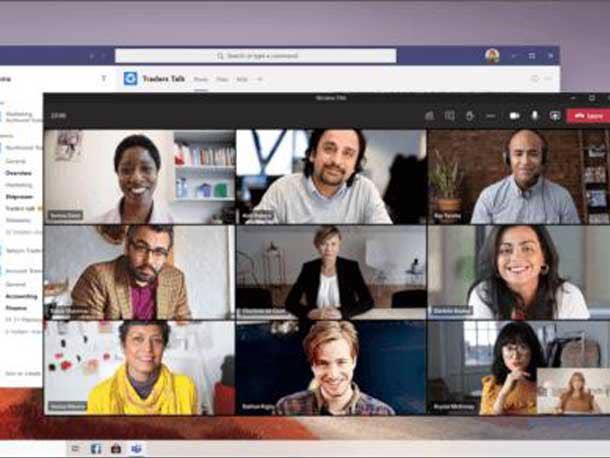
Products To Improve Work
Space, in fact, is the ultimate collaboration tool that we have refined over a 200-year period. We’re not going to trade it away, but we are going to use it very differently. With Teams Rooms, we are bridging the gap between people working remotely and those in the office with innovations like ‘front row,’ in partnership with OEMs (original equipment manufacturers) including Jabra, Huddly, Logitech … Poly and Yealink.
We are delivering intelligent cameras designed to enhance the presence of people in Teams Rooms. With AI-powered speaker tracking, in-room cameras can detect who in the room is speaking. And cameras are capable of producing multiple video streams, allowing in-room attendees to show up as individual feeds to remote attendees so that every person can be seen and identified clearly and show which participants are in person and which are remote. This is so useful to ensure every meeting attendee is always a first-class participant.
It’s also why I’m so energized about Windows 365, which is designed to help organizations empower their workforce to be more productive and connected regardless of their location.
Between Windows 365 and Azure Virtual Desktop, you have the most diverse set of options so everyone can work how and where they want. It’s been one year since we launched Windows 365 right here at Inspire, and it’s been amazing to see how so many people in organizations are using it to power hybrid world.
Customers like Lego Group are using Windows 365 to help interns and vendors rapidly on board and collaborate with internal teams from their first day on the job. And partners like ScanSource and IMS Solutions have helped businesses (like) BPO American adopt Windows 365 to make it possible for call center employees to work remotely while improving their security posture and reducing infrastructure costs.
We continue to expand where and how Windows 365 can be used. And today, we are excited to announce that Windows 365 will soon be available for the U.S. government and government contractors.
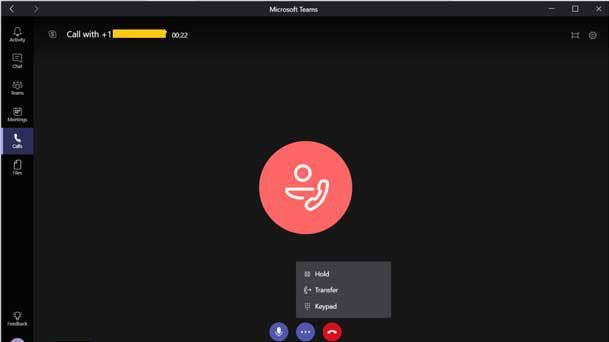
Growing Teams With Third-Party Apps
Our approach to space extends to the metaverse and how we’re bringing together digital and physical worlds.
We’re taking a software-led approach so that everyone can benefit from these experiences, regardless of what device they’re on. That’s what we’re building with Mesh for Teams, which I’ve been using internally and is accessible from anywhere on any device – including VR headsets, HoloLens, tablets, phones as well as PCs.
This secular change extends to every business process. Consider marketing, sales, customer service, supply chain, finance, all the critical everyday functions in an organization.
Think about this. If Teams is where we work, we will want to access everything right there in the flow of work, giving back our most scarce resource – our time.
And the software required to manage these mission-critical business processes must move from traditional ERP (enterprise resource planning), CRM (customer relationship management) and supply chain management systems of record to be much more data collaboration and AI first.
Teams along with Power Platform and Dataverse are powering this across all enterprise business applications. Today, over 1,500 third-party applications are available on the Teams app store, spanning every industry and business function.
More and more ISVs are generating millions in revenue from customers using apps built on Teams. And for our SI (system integrator) partners, collaborative applications are the most common starting point for modern work transformation programs.
Leading third-party ISVs – including Adobe, Atlassian, Figma, Salesforce, SAP, ServiceNow, Workday – have all built deep integrations with Teams, helping customers bring every business process and function directly into the flow of work.
To share just one example, (shipping giant) Maersk is using ServiceNow on Teams to streamline daily work and create great employee experiences directly within Teams.
Dynamics 365 is purpose built for this new world of business process. Our intelligent business applications connect data, process and teams, ushering in a new era of hyper-connected business and offering unparalleled value. Customers can save up to 50 percent compared to our major competitors.
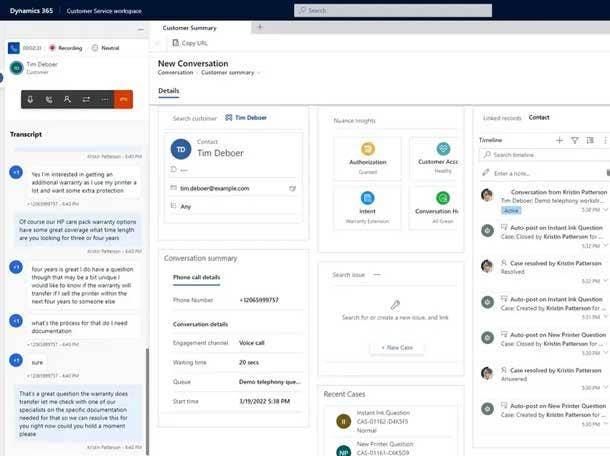
Microsoft Digital Contact Center Platform Debuts
I’m excited to announce the Microsoft Digital Contact Center Platform, which brings together Dynamics 365, Azure Communication Services, Teams, Power Platform and Nuance into one open, extensible and collaborative platform to deliver seamless omni-channel customer engagement.
Today, siloed data systems – along with high interoperability and maintenance costs – too often get in the way of best-in-class personalized customer experience. Because our digital contact center is a single unified platform, it reduces costs and allows instant visibility into trends across all service channels.
For instance, consider a customer service agent at HP (Hewlett Packard) who takes a call. They’re able to automatically authenticate the customer based on their voice instead of a PIN (personal identification number) or password. They’re able to see the health of the account at a glance. They can instantly see topic pages related to the customer specific questions. And with Teams integration, they can swarm with subject matter experts across the organization to resolve escalations.
We’re also working closely with SIs and ISVs such as (contact center services providers) Genesys and Nice to give customers the choice they need to support their digital contact center transformation strategy.
When we make everyday experiences collaborative, we can bend the productivity curve for an entire organization. It’s why I’m excited to see so many customers and partners leverage Teams as an organizing layer for a new class of collaborative line of business applications.
I believe these apps could become the biggest breakthrough drivers in today’s labor market, because they bring both knowledge workers and frontline workers together in the context of their communications and drive the next level of automation and productivity. More than 80,000 of these apps are being created by organizations in every industry.

On Cybersecurity
The numbers are quite stark. Businesses are experiencing an increase in both the volume and sophistication of cyberattacks. Cybercrime is now expected to cost the world $10.5 trillion annually by 2025.
We’re bringing together technology, threat intelligence and human expertise to provide comprehensive security compliance and management solutions that empower you as our partners to solve security challenges for our customers of all sizes, across all industries, on any cloud in any client platform.
We integrate more than 50 security product categories – from insider risk management to endpoint protection – once again reducing cost and complexity. And on average, customers save more than 60 percent when they turn to us as compared to a multi-vendor solution.
Our solutions are informed by more than 24 trillion threat signals each day. It starts with Microsoft Entra, our new vision and portfolio for identity and access. It extends to Microsoft Purview, which is the future of compliance and data governance; Microsoft Priva, which includes new capabilities to help your customers manage privacy; and, of course, Microsoft Defender and Sentinel.
We are the only cloud provider with multi-cloud protection for the top three platforms. And recently, we announced new protections in Defender for IoT so you can help customers discover and secure their enterprise IoT (internet of things) devices like modern printers and smart TVs.
It’s never been easier to extend a customer’s protection to cover all of IoT. And with Microsoft Security Experts, you can tap into our own threat researchers. Our expertise is now your expertise.
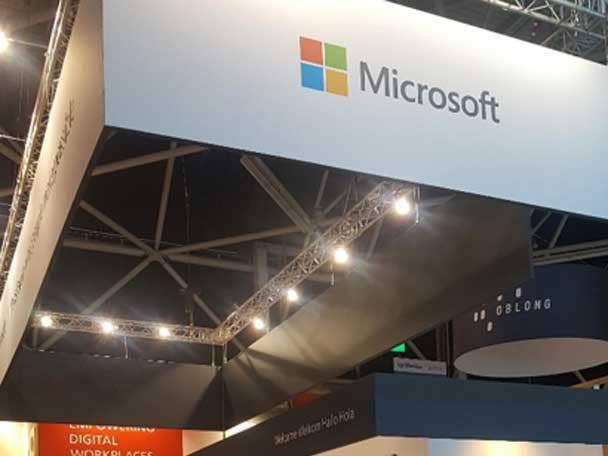
‘Bet On Us’ For Faster Growth, Higher Margins
The Microsoft Cloud is the only cloud that allows you to take advantage of both best-of-category products as well as best-of-suite solutions across the entire tech stack in every area that matters most to our customers so that they can do more with less.
We want to be the best partner for our partners, and we are investing in your success. We are committed to helping you better meet customer needs by helping you gain specializations in deep technical training across all the solution areas I’ve talked about today.
We made it easier for you to engage with us and drive your own profitability, which is why we lowered our marketplace transaction fee from 20 (percent) to 3 percent, so you can invest more deeply in your own growth.
And today we’re announcing additional investments including free access to our best-in-class developer tooling to help ISVs build and publish their apps faster.
The numbers speak for themselves – partners who bet on us grow faster and generate higher margins. And for every dollar in revenue we generate, partners who build differentiated software solutions on the Microsoft Cloud generate $10 more.
But it goes beyond that. We want you to be successful so that you can help the world around us be more successful. It’s never been more important to connect what we build to what the world needs us to build. This is our collective purpose.